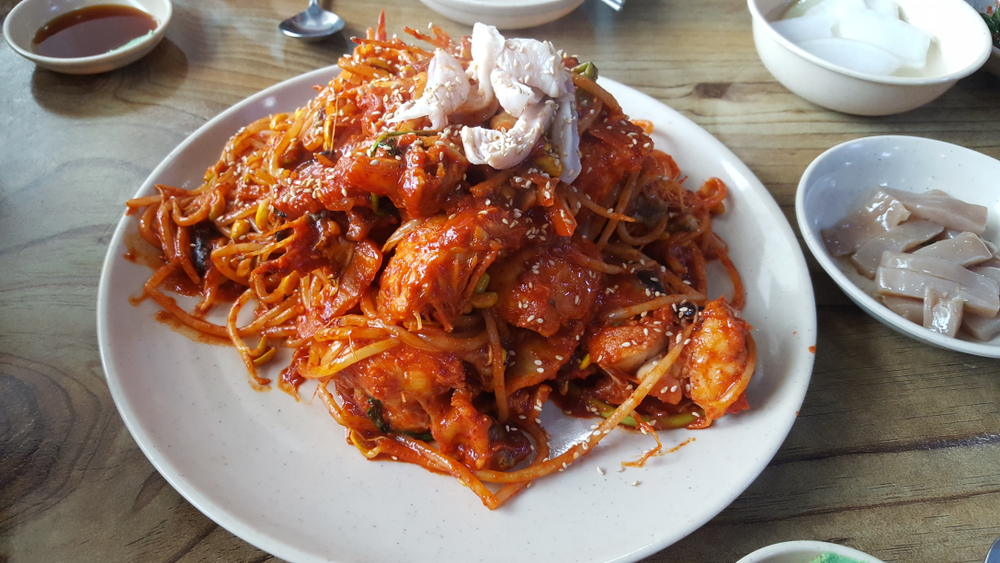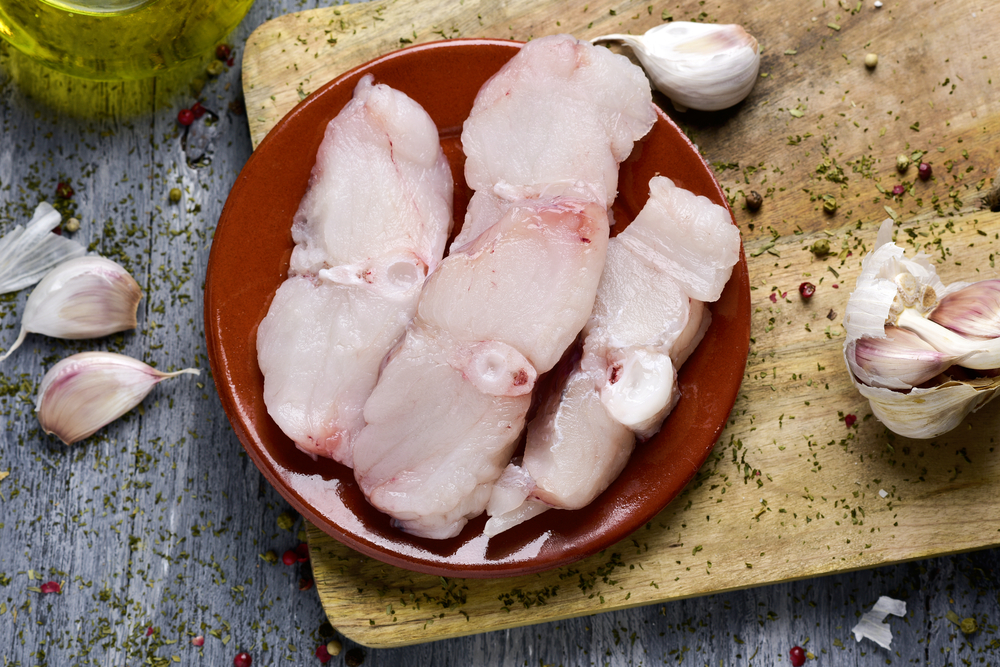Agu, or monkfish, is a common catch in the southern coastal region of the Korean city of Masan. This unattractive fish was prepared in the 1960s by Korean fisherman unwilling to waste what was too visually unappealing to sell. The name agujjim comes from the words for monkfish and the verb jjida, meaning “to steam.” The preparation traditionally includes soybean sprouts and is made by braising the monkfish in a small amount of broth and spicy sauces.
In the 21st century, agujjim has exploded in popularity in Korea and can be found at Korean eateries in urban US cities in New York and California. Agujjim is usually served as a large dish for sharing by several diners. With firm, white flesh, monkfish is quite palatable to Westerners, especially if purchased in cut pieces, with the unsightly large head already removed. In the Korean style, this dish would include the bones and skin of the fish, but American cooks may prefer to use filets. Instead of Korean sea squirts, this recipe calls for the use of shrimp, more commonly available in the West.
Recipe Servings: 2
Ingredients
Seasoning:
- 1 Tbsp minced garlic
- 1 tsp finely grated ginger
- 3 Tbsp gochugaru (Korean red chili pepper flakes)
- 1 tsp sugar
- 1 Tbsp soy sauce
- Ground black pepper, to taste
- 2 Tbsp water
Fish:
- 1½ lbs monkfish (agu), cleaned and cut into 2-inch-thick pieces
- 1 tsp kosher or sea salt
- 2 Tbsp rice wine or dry white wine
- 8 oz soybean sprouts
- 6 large shrimp, unpeeled (optional)
- 2 oz minari or watercress, cut into about 3–4-inch lengths
- 2 green onions, cut into about 2-inch lengths
- Starch slurry (1 Tbsp corn or potato starch in 2 Tbsp of water)
- 2 tsp sesame oil
- 1 tsp sesame seeds
- White rice, as needed for serving
Directions
- Whisk together the seasoning ingredients in a small dish. Set aside.
- Make sure the monkfish is drained and dry; if necessary, pat it dry with paper towel.
- Whisk together the salt and wine in a large dish, and then add the monkfish. Set aside.
- Fill a large bowl with ice water.
- Bring 1 cup of water to a boil in a medium pot, and then add the soybean sprouts. Cook, covered, for 2 minutes over high heat.
- Drain; then immediately shock the sprouts in the prepared ice water. Drain again.
- Heat a heavy, deep skillet. Add the monkfish and ½ cup of water. Cook, covered, over medium heat, for 4–5 minutes, flipping the fish halfway through.
- Add the seasoning mix and the shrimp, if using. Continue to cook, covered, for an additional 2–3 minutes, until the fish is tender and the shrimp is cooked through.
- Add the vegetables, gently tossing to evenly coat with the sauce.
- Pour in the starch slurry. Stir until the sauce thickens, and then stir in the sesame oil and sesame seeds.
- Serve with rice.
For Seasoning:
For Fish:
Recipe introduction and directions © Copyright 2016-2025 World Trade Press. All rights reserved.


